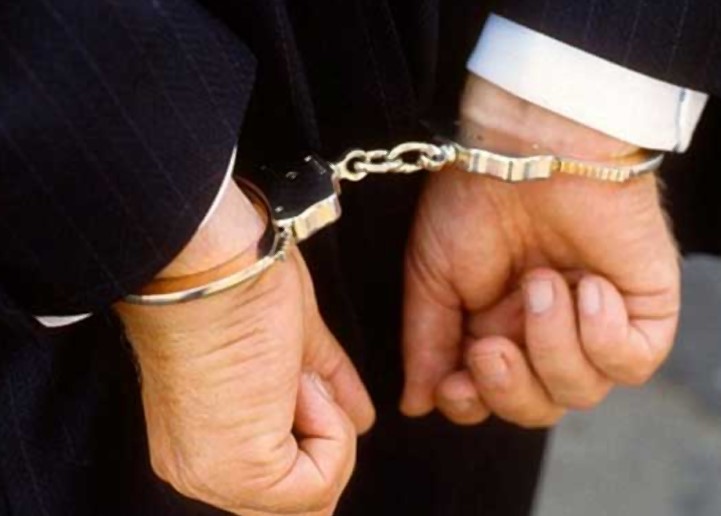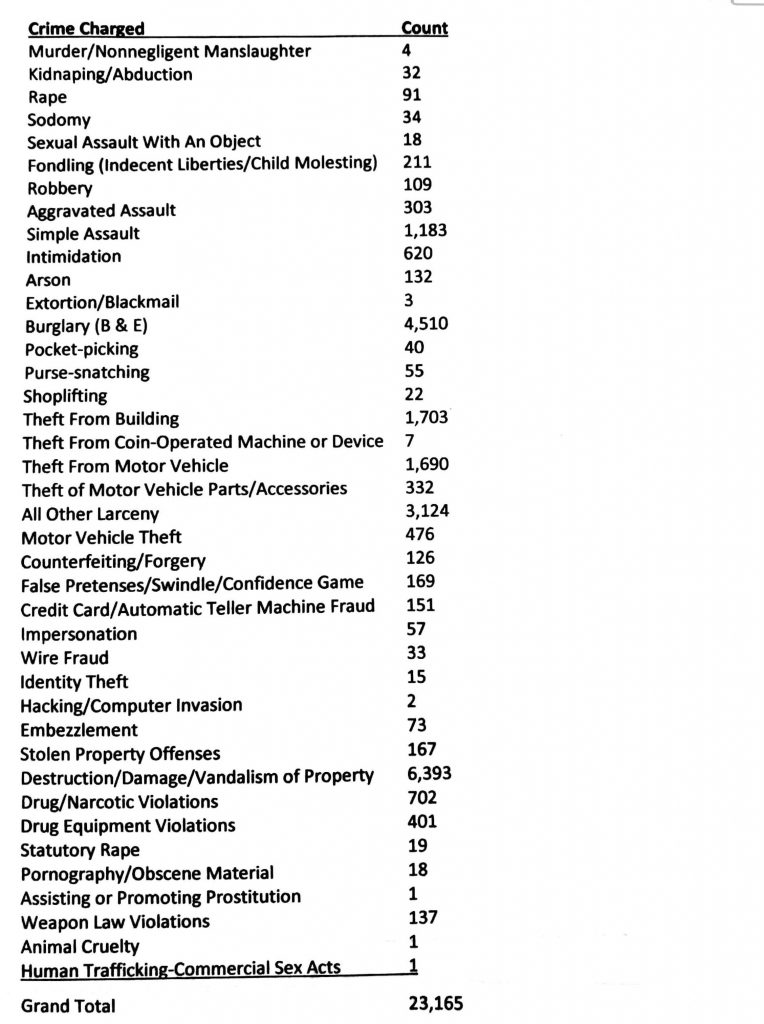Crimes on Religious Property in the United States: Offenses in NIBRS Using 2016 Data.

By Morgan Donald, Crime Analyst
February 2, 2020
One place where church crime occurs is—at church. Or, more correctly, on one type of property where religious rituals occur. Government data on such offenses were rare until the advent of a new data collection system called NIBRS. NIBRS stands for National Incident-Based Reporting System. The Uniform Crime Reports offered insights on crime since 1930, but location information and religious types were not publicly available, despite knowledge that crimes were being committed by religious staff. Victim or offender occupation such as “pastor” or “priest” was and is still not available to criminologists. This new crime data collection system does not yet distinguish between “church,” “synagogue,” “temple,” or “mosque,” though churches are numerically the most common place of worship. That said, NIBRS (the National Incident Reporting System) shines a bright light on some of the kinds of crimes commonly attracted by churches (or “places of worship”).
NIBRS covers crimes on church property, but many church crimes also occur or spread to non-church property. NIBRS does not report ALL crimes in the U.S. because only 16 states are fully NIBRS compliant, yet NIBRS data is considered representative of the U.S. crime problem.
Crimes on religious property total 23,165 incidents in 2016, the most recent year for which data was publicly available. It should be noted however that only 16 states are fully compliant at reporting their crimes to NIBRS, and only 50% of crimes are reported to the police in the U.S. according to the National Crime Victimization Survey. Vandalism accounts for 27.6% of offenses (6,393 cases), burglary, 19.5% (4,510), and theft, 16.3% (3,767) lead the way. Assault and murder account for 9.7% (2,251) of offenses (4 murders).
These numbers provide only a snapshot. Many forms of religion-based crimes are ignored in NIBRS. For instance, crimes during Bible studies in private homes, or rituals held off-site, which appears to be increasing, are not represented here. Nor are crimes on other related properties including schools, libraries, or recreational facilities. In a 2013 national report of arsons on religious properties, generated by the National Fire Protection Association, funeral homes (or mortuaries) were included as religious-based properties in data collection and analysis. Funeral homes account for only four percent of crimes at “religious properties” as were religious schools. Many funeral homes do hold religious services. NIBRS also would not include crimes occurring during funerals (such as funeral processions) if they occurred off church or funeral home properties. Increasing numbers of shootings appear to occur during funeral processions or during cemetery burial rituals.
Reporting of crimes occurring at churches may be even lower than for other property types. While much has already been written about the non-reporting of sex crimes by church officials, many churches are also known to rely on theocratic or ecclesiastical trials and sanctions. This means that private church-held trials are held, with no notification or accountability to secular authorities.
“Church Crime Information” typically differs from other sources of crime data in that it includes the crimes of Christian church leaders and their staff, on or off church grounds. This includes dangerous or financial crimes that take advantage of the elderly or unsuspecting people who might attend church.

*Note: NIBRS includes all types of places of worship, not just Christian. Only in bias-motivated data does it indicate religious sub-types to indicate Christianity or denomination.
Interestingly, most crimes in NIBRS (using first offense only; 20,746 cases) were reported by police as against an “individual” (9,208) rather than against the “religious organization” (6,940). For example, most arson is against the “religious organization” (73 cases) vs. (15 cases) judged “individual,” and most theft from a motor vehicle is against an “individual” (1,521 cases) rather than a “religious organization” (65 cases), presumably involving parishioners parking in the church/synagogue/mosque lot. Other victim-types were excluded to produce these numbers. For instance, of religious crimes, 31 cases involved a victim-type identified in NIBRS as “business.” These might therefore be religious bookstores or music groups. Only 72 bias-motivated crimes were reported against Christian churches specifically.
Victim race is an important factor in most of these crimes. All four murders were identified as African American victims. Of all offenses, 74.5% were white victims, compared to 23.3% African American victims, and 2.2% other. Therefore, African American victims are disproportionately impacted by crimes at churches. According to Pew Research Center (2020), 79% of African Americans identify as Christian, with the largest segment belonging to historically black protestant churches.
In conclusion, NIBRS provides an interesting source of comparison data for examining crimes at U.S. places of worship. One particular challenge of using NIBRS data is that it still does not specify Christian churches as a location for crime, instead aggregating all types and faiths of places of worship. Data also is not specific enough to determine the number of crimes that are committed by members of the church (i.e. the clergy) as opposed to crimes committed by non-church members. Given the epidemic of church sex crimes alone, changes should be made within NIBRS to provide greater detail about where and who are victims and offenders in church-related crimes. It is highly likely that most crimes at churches are committed by church members or their affiliates because they (and not strangers) are the ones spending the most time together.

